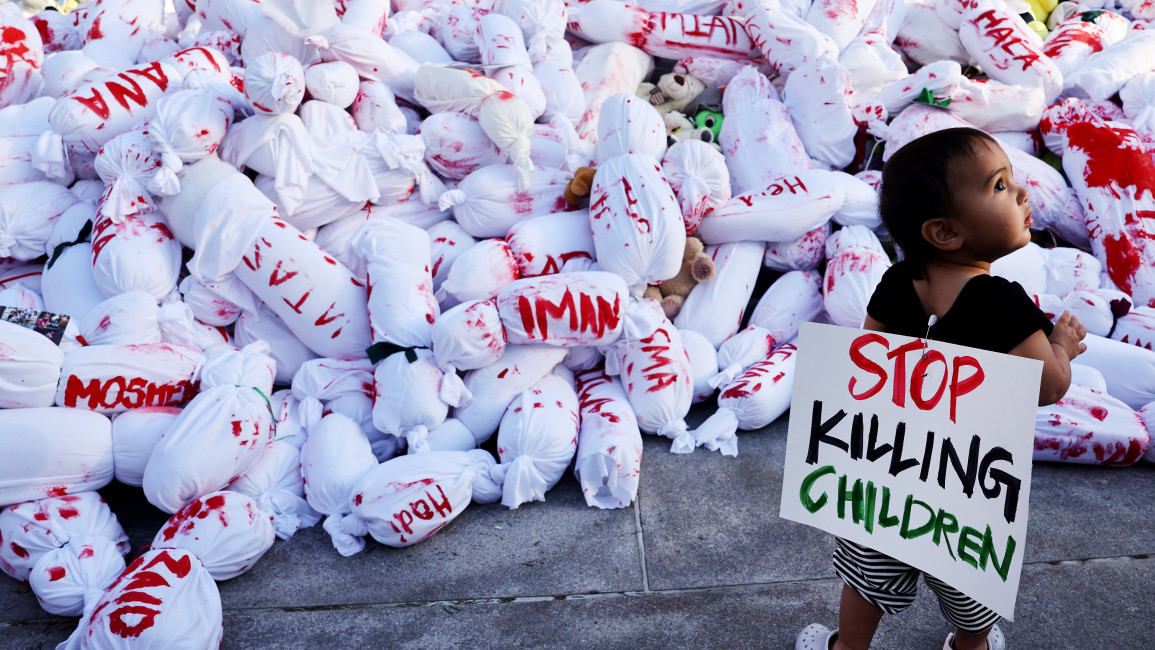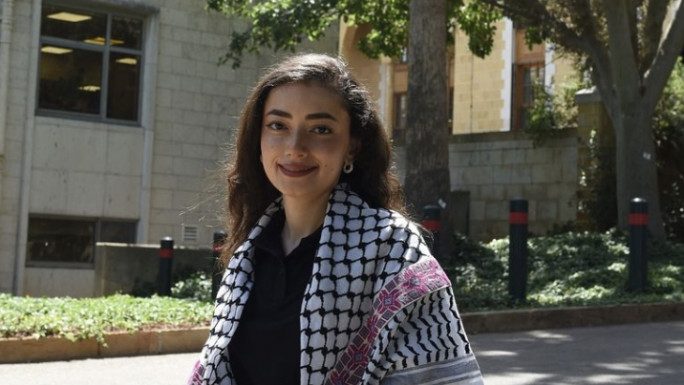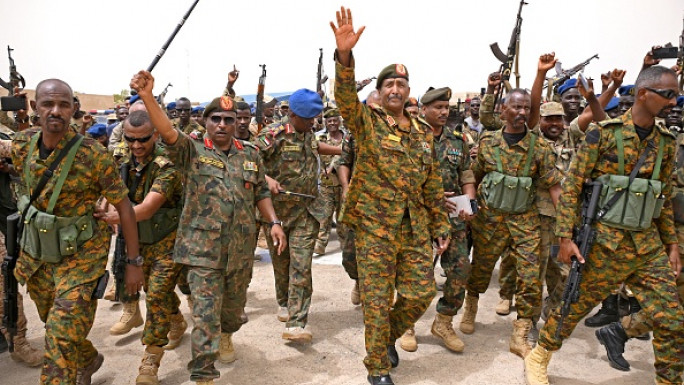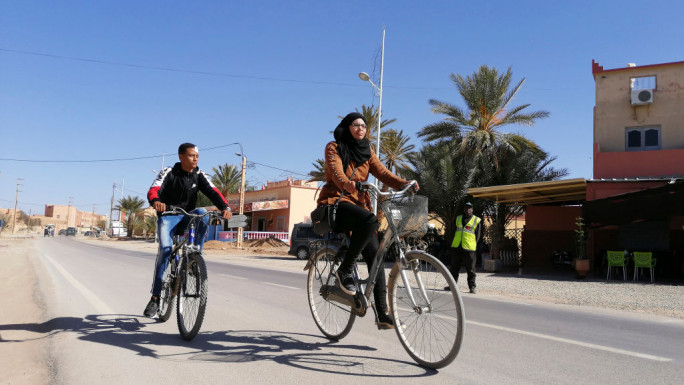
Israel is committing genocide and Western media is helping hide the bodies
For over the last nearly 11 months, mainstream Western media has framed the ongoing onslaught in Gaza as a ‘classic’ conflict between two parties. The Gaza mass killing, is largely bloodless on televised screens. On social media platforms, another story is unfolding; a torrent of horrific accounts of Israel’s war crimes inflicted on civilians surpassing any surreal imaginary of violence, captured by the victims themselves as well as their perpetrators, the latter proudly celebrating their impunity.
Navigating between my social media feeds and my TV screen, it is hard to believe I am following the same story. Gazans’ encounters with their “bare life” are beyond any hallucinations that our imagination can create, including our own living experiences of trauma.
I was born and raised in a conflict zone in South Lebanon where life was punctuated by Israeli attacks and several invasions. However, Western media remains largely indifferent to the victims. The absence of their shredded bodies from mainstream coverage is more perverse than simple apathy due to lack of geographical and cultural proximity, as we teach our students in journalism courses. Indeed, the media is serving to whitewash Israel’s war crimes and therefore partakes in the erasure of those who it violently targets. Victims are denied the basic right to be acknowledged as suffering subjects.
The implicit message is: it is OK to kill them since some of them are potential terrorists, and their children will likely follow suit.
The unsaid
Passive voices and soft wording that steers clear of terms like “massacre”, “crimes” or “killing”, are just a some of the countless examples of erasure used in mainstream Western reporting. For instance, a recent report by the BBC mentioned that the number of victims in Gaza surpassed 40,000, while adding, with much emphasis, that the figures don’t distinguish between civilians and combatants. This not only implies that some of the killings are justified as Israel peruses those it deems a “security threat”, but the lack of clarity on how many sit in this category could serve to justify such a high death toll and limit empathy amongst readers.
Another striking example from the BBC is their coverage of the savage killing of a man in Gaza who had Down’s syndrome and was left to die after being attacked by an IDF combat dog. The media outlet’s initial headline read: ‘The lonely death of Gaza man with Down’s syndrome’. After public criticism across social media, the BBC deleted the post and amended their headline.
The BBC is not alone, however. A headline by the New York Times highlighted ‘dire conditions’ as being the cause of the ‘multitude of amputees’ in Gaza. This indeterminate reference to conditions removes Israel’s responsibility, and instead, places the blame on the unknown and inevitable.
The coverage of the Gaza war has seen unprecedented forms of reporting that bring into question journalistic ethics and their implementation depending on the context.
Reporting on the Israeli operation that killed more than 270 civilians and led to the liberation of four Israeli hostages held by Hamas in the Nuseirat refugee camp in central Gaza on 8 June, the BBC aired a first report in the morning cheering the liberation of the hostages and their reunion with their families. There wasn’t a single word mentioning the civilian mass killing that resulted from the operation. It was only after the EU’s top diplomat, Josep Borrell, condemned the “massacre” and the UN’s aid chief’s declarations about scenes of “shredded bodies on the ground” that the BBC reporter finally mentioned the killing of Palestinian civilians. Even then, the killings were couched in the softer language of “suffering”. The massacre, according to what was shared by the reporter, did not happen.
Furthermore, there are noticeable differences in how Israeli officials are interviewed compared to Palestinian ones; the latter are continuously pressured into condemning Hamas. Not to mention there is the added layer of cultural stereotypes denoting journalists’ unmasked bias. One infamous example is the interview of Palestinian MP Dr Mustafa Barghouti by the British TV anchor Julia Hartley-Brewer on TalkTV, which ended with the presenter shouting as she implied Arab men lack respect for women.
Fake news
In the first months following 7 October attacks by Hamas fighters, Western media widely reported the testimonies of survivors or family members of victims. On occasion, these testimonies championed a discourse of “the savage against the civilised” and repeated some of most incredible stories of crimes supposedly perpetrated by Hamas. Some of these claims that were reported without questioning, like Israel’s claim that Hamas had used sexual violence against Israeli women during their attack, were later debunked and shown to be part of the Israeli propaganda machine. The damage, however, had already been done; with these narratives working to fuel support for the military operation.
The striking lack of solidarity with Palestinian journalists killed at unprecedented levels is another facet of this act of media erasure. Just recently, more than 70 organisations including the Associated Press, Agence France-Presse, BBC, CNN, The Guardian, The New York Times, and The Washington Post signed a letter asking for media access to Gaza, to alleviate the pressure on domestic journalists and counter raging disinformation. Nevertheless, it remains mainly local journalists who report from Gaza, many of whom, have been subject of targeted Israeli assassinations.
At the time of writing, at least 116 journalists and media workers have been killed since 7 October according to the Committee to Protect Journalists. International media has thus far remained largely silent on this issue, despite recent investigations by a consortium of media, including The Guardian and Le Monde, unveiling the scope of the deliberate targeting of journalists by Israeli forces.
In Gaza, the distinctive blue flak jackets and helmets of journalists, symbols of the pursuit of truth under dangerous conditions, have now also come to represent Israeli violence and silencing.
As I browse my social media feeds, coloured by the blood of the most recent crimes in Gaza, I watch another video of a young girl shouting in grief addressing an absent audience: “we are exhausted, why don’t you feel with us?” I want to tell her: I feel your anger, but the media are unable to see you. They instruct us every day to negate your suffering, even your existence, as a human. For them, it should continue to be business as usual.
Fatima el Issawi is a Professor in Journalism and Media Studies at the University of Essex. Her research focuses on the intersection between journalistic practices, political transformation, and conflicts in transitional contexts to democracy in the Middle East and North Africa. Fatima has over fifteen years of experience as international correspondent in conflict zones in the MENA. She is the author of “Arab National Media and Political Change” (Palgrave Macmillan, 2016) and the co-editor of “The Unfinished Arab Spring: Micro-Dynamics of Revolts between Change and Continuity” (Gingko, 2020).
Follow her on X: @elissawi
Have questions or comments? Email us at: editorial-english@newarab.com
Opinions expressed in this article remain those of the author and do not necessarily represent those of The New Arab, its editorial board or staff.

![Palestine sat next to member states at the United Nations General Assembly on Tuesday [GETTY]](/sites/default/files/styles/image_684x385/public/1441455581.jpeg?h=199d8c1f&itok=CgJaFY6v)



